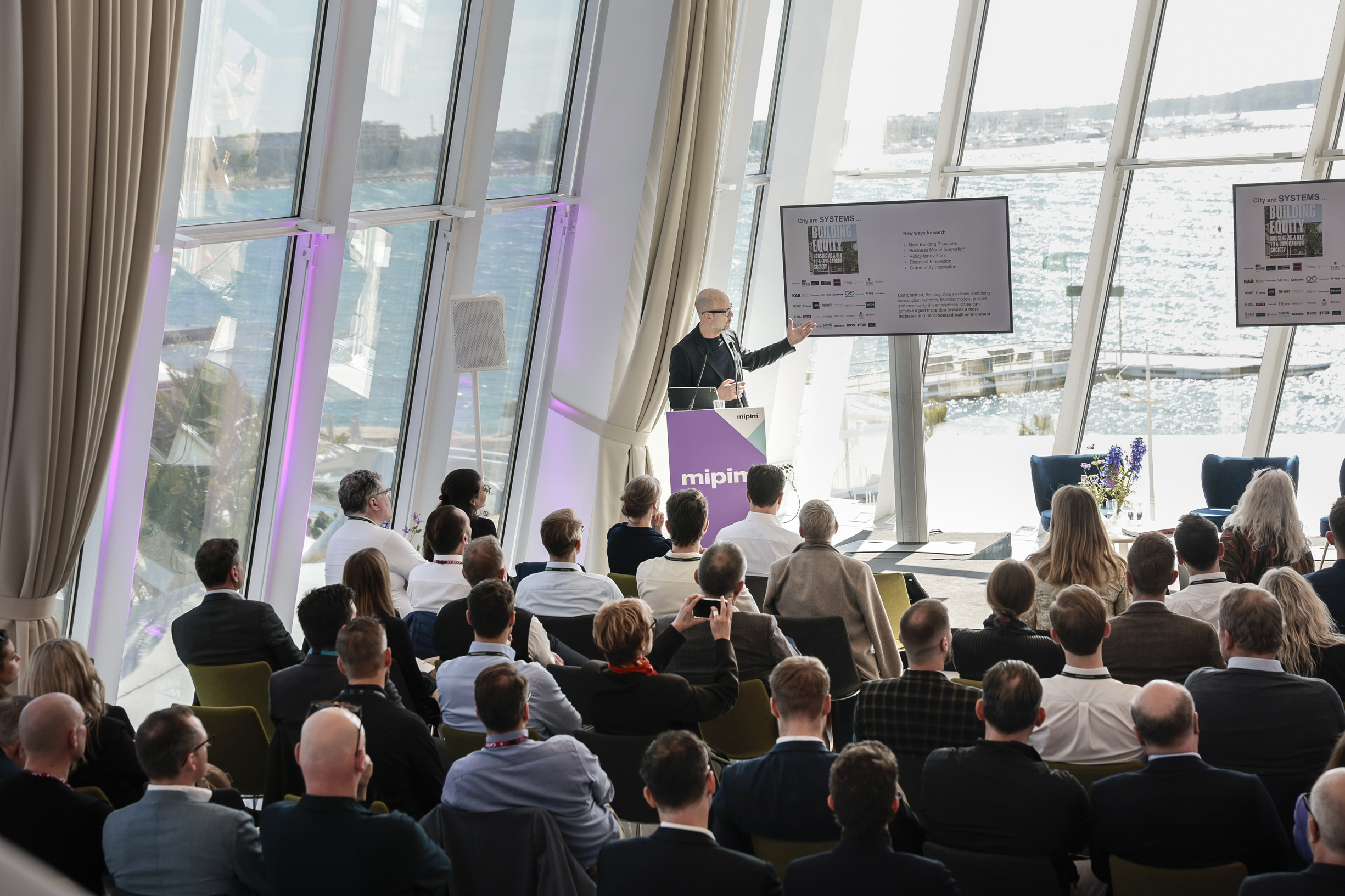Cities are under pressure — from rapid urbanization, climate change, and shifting political landscapes — demanding both bold vision and pragmatic action. Balancing sustainability, economic viability, and technology may seem like common sense, but as we explored at MIPIM, it’s anything but simple. Volatile markets, evolving regulations, and financial constraints make execution challenging.
We delved into this and here are some of our reflections from our days in Cannes:
The Systemic Challenge of Urbanization
In his Global Solutions Keynote, our CEO Torben Klitgaard highlighted a critical dilemma: How do we accommodate rapid urbanization without breaching planetary boundaries?
With 84% of the EU’s population expected to live in cities by 2050, the stakes couldn’t be higher. The built environment must transition—fast—but it must do so within the ‘safe zone,’ balancing growth, social equity, and environmental limits.
This requires rethinking entire urban systems—not just buildings, but the policies, financial models, and community-driven initiatives that shape them. Sustainability isn’t a side project. It needs to be embedded in how cities are designed, built, and funded. Again, this may seem like an obvious approach. But as case studies presented at MIPIM showed, integrating sustainability across these dimensions remains one of the toughest challenges we face.
AI & Human-Centric Cities
Technology is racing ahead, but governance is struggling to keep up. How do we ensure AI makes cities not just more efficient, but also more livable?
At a roundtable co-organized by Jakob Norman-Hansen, Director, Global Networks & Partnerships, in collaboration with ULI Europe, city leaders, architects, and investors debated AI’s role in urban planning.
The consensus? AI is a game-changer—but only if we use it wisely. Cities are already leveraging AI for predictive modeling, design optimization, and citizen engagement, but concerns around data privacy, bias, and decision-making transparency loom large. Meanwhile, architects and developers who fail to integrate AI risk falling behind.
This sounds like an easy fix: regulate AI responsibly, foster public-private collaboration, and ensure transparency. Yet, in practice, cities are struggling to strike the right balance between innovation, governance, and ethical AI adoption. Some are moving too cautiously, while others are diving in headfirst without the necessary guardrails.
The takeaway? AI can’t be left to the private sector alone—it needs policy frameworks that ensure it serves people, not just profit.
A big thank you to our partners Byggesocietetet, PropTech Denmark, Byens Netværk and ULI Europe for great collaborations.



